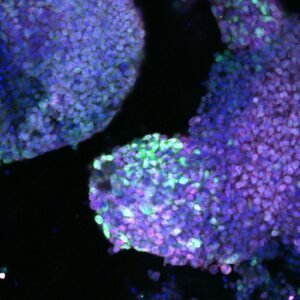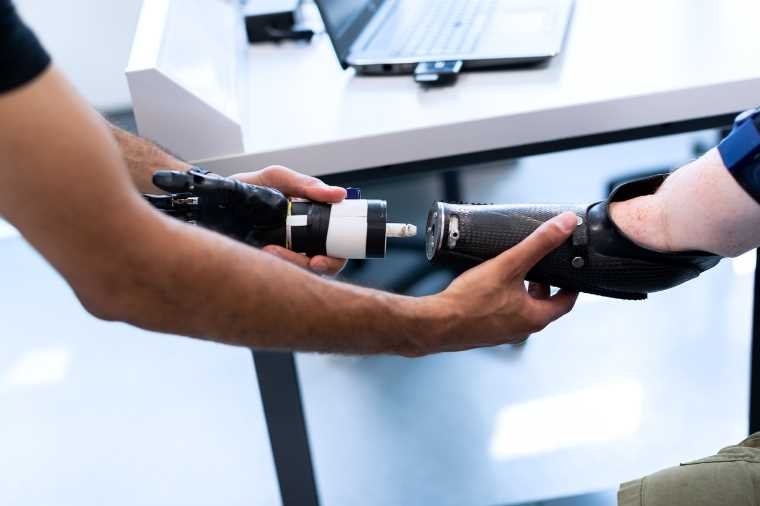In a collaboration with Kyushu University, a team of Harvard University scientists says their new research into the ability to regrow lost limbs “sets the stage’ for proper limb regeneration.
Of course, some animals, including amphibians, can regrow a lost arm or leg, but the team behind this latest research hopes to bring that ability to humans who hope to regrow lost limbs.
The researchers also say this process could facilitate the growing of limbs in animals that lost them to evolution, such as snakes.
Previous Research Hinted at the Ability to Regrow Lost Limbs
Approximately 60 million people around the world are living with the loss of one or more limbs. While some limb losses are caused by car accidents, industrial mishaps, or even natural disasters, many are also the result of sickness or disease, including cancer. Many scientists have tried to tackle the problem, but thus far, none have succeeded.
In recent decades, the promise of stem cells has reinvigorated limb regrowth research, leading to some successes in animal trials. For example, in 2022, The Debrief revealed how researchers from Tufts University and Harvard University’s Wyss Institute reported a significant breakthrough when they were able to successfully regrow the amputated legs of an African clawed frog.
Although not a perfect replica of the lost legs, the researchers in that study said their combination of chemicals allowed the frog to grow new limbs that “had bone structure extended with features similar to a natural limb’s bone structure, a richer complement of internal tissues (including neurons), and several “toes” grew from the end of the limb, although without the support of underlying bone.”
“It’s exciting to see that the drugs we selected were helping to create an almost complete limb,” said Nirosha Murugan, a research affiliate at Tufts. “The fact that it required only a brief exposure to the drugs to set in motion a months-long regeneration process suggests that frogs and perhaps other animals may have dormant regenerative capabilities that can be triggered into action.”
Now, Dr. Yuji Atsuta, a researcher who began tackling this project at Harvard Medical School and continues it as a lecturer at Kyushu University’s Graduate School of Sciences, says his team has made a significant step forward that could set the stage for humans to one day regrow lost limbs.
Reprogramming Key Cells to Work Like Limb Regenerators
One path to potentially regrow lost limbs involves tapping into the incredible abilities of embryonic stem cells, while another involves reprogramming adult cells into similarly functioning pluripotent stem cells. Unfortunately, retrieving cells from embryos is fraught with ethical concerns, and using manufactured stem cells can often result in the cells becoming cancerous.
Instead, Atsuta’s team focused on the role of naturally occurring limb progenitor cells that reside at the tip of limb buds when animals are in the embryo stage. Specifically, they hoped to reprogram standard fibroblast cells to mimic the progenitor cell’s abilities to grow the limb and all of its necessary components.


“During limb development in the embryo, limb progenitor cells in the limb bud give rise to most of the different limb tissues, such as bone, muscle, cartilage, and tendon,” Atsuta explained. “It’s therefore important to establish an easy and accessible way of making these cells,”
In their published research, which appears in the journal Developmental Cell, the team details how they first identified a group of 18 genes that are “more highly expressed” in early limb buds compared to other tissues. Next, they cultured a group of fibroblast cells from mouse embryos. Then, they exposed them to these 18 genes, also called “transcription factors,” using a viral vector that inserted the genetic information from the transcription factors into the fibroblast cells.
As hoped, the altered fibroblasts “took on the properties and showed similar gene expression” to naturally occurring limb progenitor cells. The team then refined the process, which resulted in only four transcription factors needed to convert the fibroblasts to resemble limb progenitor cells.
“These reprogrammed cells are not only molecular mimics; we have confirmed their potential to develop into specialized limb tissues, both in laboratory dishes (in vitro) and also in living organisms (in vivo),” says Atsuta. “Testing in vivo was particularly challenging, as we had to transplant the reprogrammed mouse cells into the limb buds of chicken embryos.”
Applying the Process to Human Cells
Although the new cells weren’t charged actually to regrow lost limbs, the researchers say that their successful conversion of fibroblasts to cells that mimic limb progenitor cells is a significant step toward that goal. The team says that they are currently trying to apply their process to human cells “for future therapeutic applications.”
In the meantime, the team is looking to replace the lentivirus they used to inject the genetic information into the fibroblasts, as this method increases the chances of the cell going cancerous. The researchers also say they are planning to study how their process may work on animals that have lost their limbs to evolution.
“Interestingly, the reprogrammed limb progenitor cells generated limb bud-like organoids, so it seems possible to generate limb tissues in species that no longer possess them,” Atsuta said. “The study of limbless snakes can uncover new pathways and knowledge in developmental biology.”
Christopher Plain is a Science Fiction and Fantasy novelist and Head Science Writer at The Debrief. Follow and connect with him on X, learn about his books at plainfiction.com, or email him directly at christopher@thedebrief.org.

